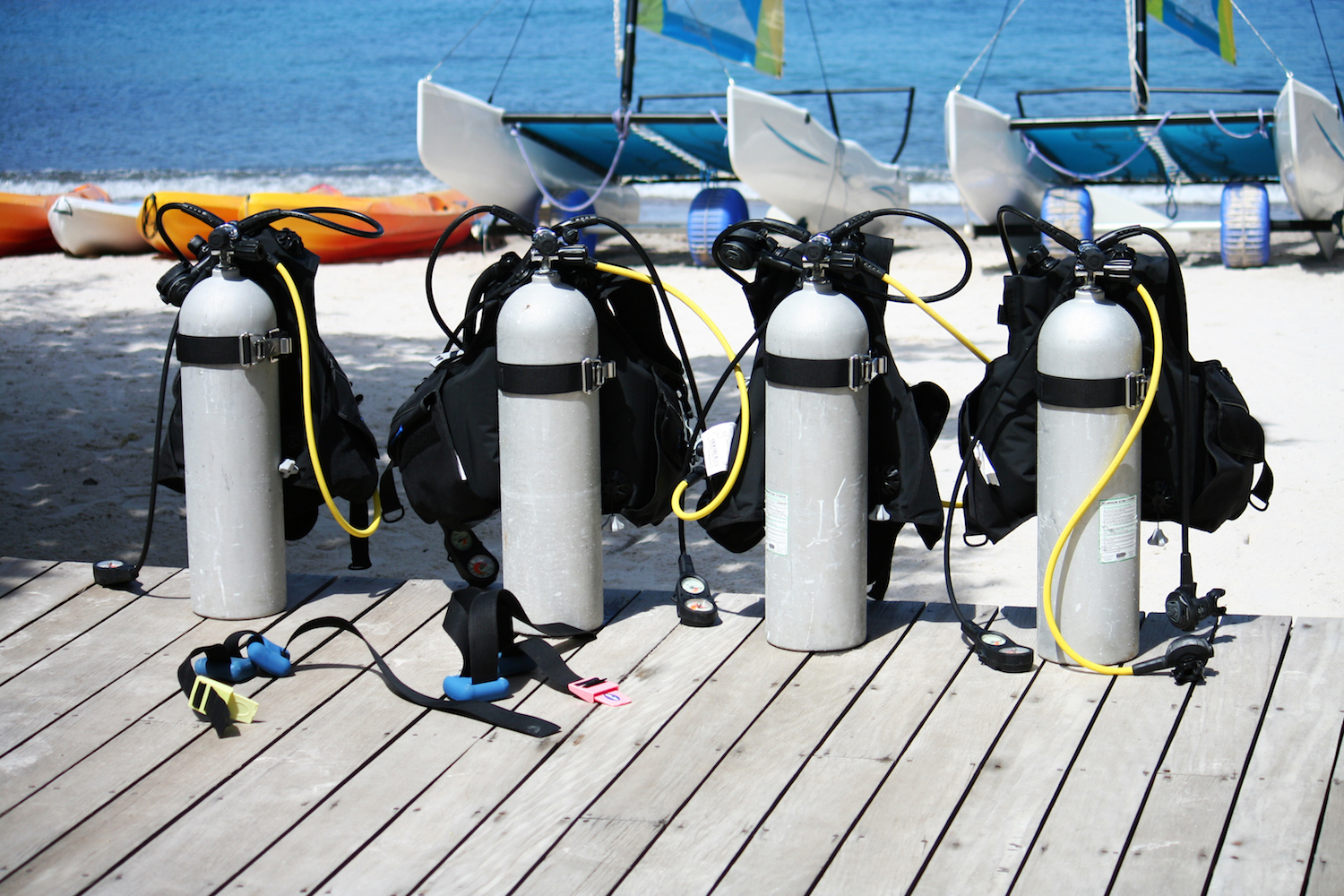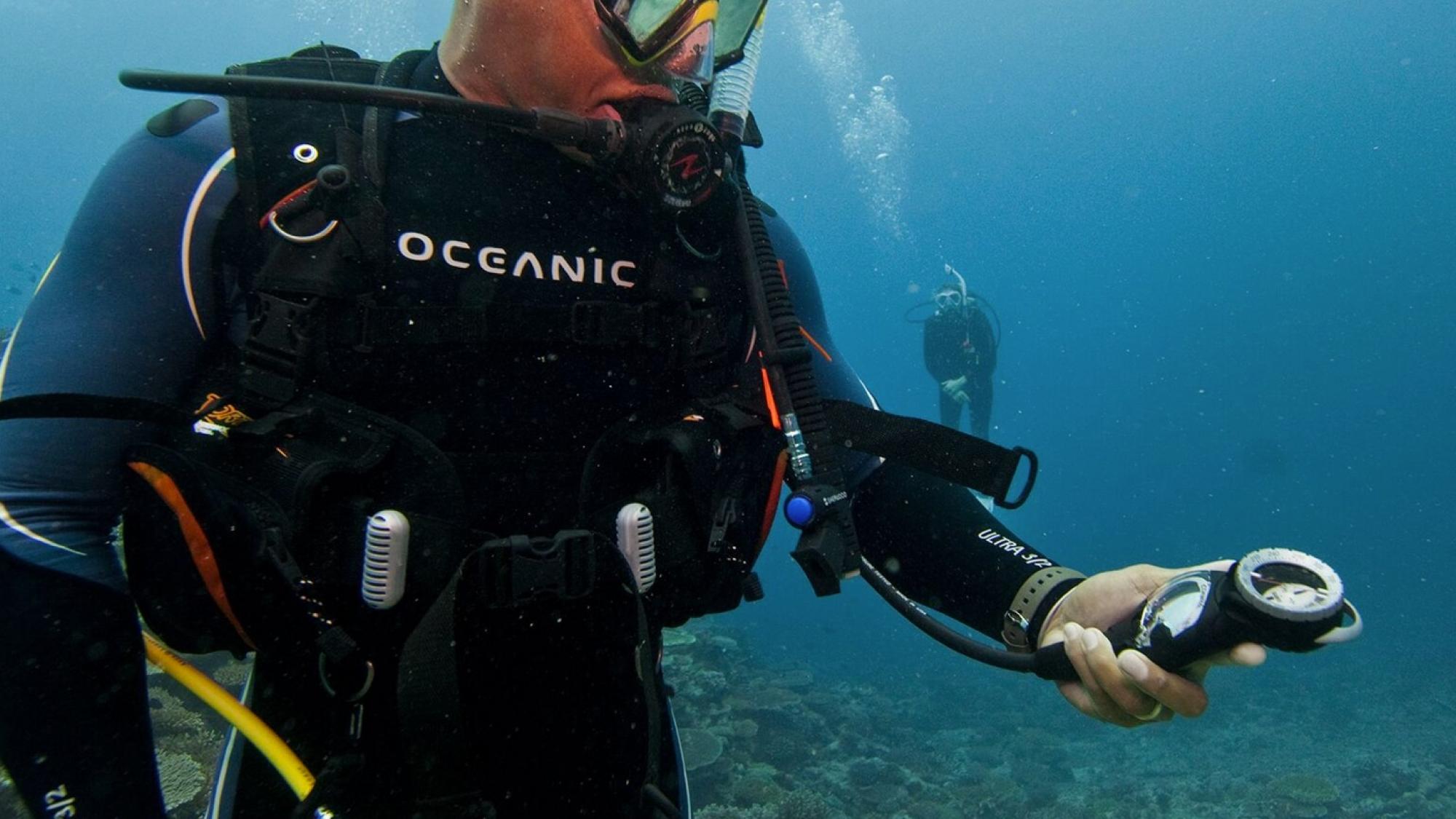Scuba diving is a global sport, welcoming participants from all over the world. When comparing scuba diving in different countries, we need to take into consideration that some aspects change along the way, and one of the main things that changes from country to country is units of measurement. For example, when traveling, we have to convert miles to kilometers, pounds to kilograms, and Celsius to Fahrenheit. The numbers change but the physical measurements are the same. Bar or PSI is one additional measurement change scuba divers sometimes encounter. Below, we’ll explore how these units of measurement compare.

What is a Bar?
Bar is a unit of measurement from the Metric system defined as 100,000Pa, or 100 kiloPascals (100kPa), and it measures pressure. But what does pressure measure? Pressure is the amount of force applied per unit of area. In this case, a Pascal measures kilograms as the force applied and square centimeters as the unit of area, or kilograms per square centimeter. Bar is the most common unit of pressure measurement when you look at metric scuba pressure gauges, although you occasionally will see them use kPas. Only three countries globally do not use bar as the measurement of pressure.
What is PSI?
PSI is the unit of measurement in the Imperial system for pressure. As we know, pressure is the amount of force applied per unit of area. In this case, pounds would be the force applied and one square inch is the unit of area, or pounds per square inch (PSI). The three countries that use this system are the United States, Myanmar and Liberia. As you can tell, what system you dive with, will depend on where you are from, where you are currently diving or where you start diving.
Bar vs PSI
What exactly are bar and PSI measuring? In general terms, they measure pressure, and in scuba diving, measuring pressure is one of the most important things keeping us safe underwater. Divers specifically want to measure atmospheric pressure (ATA) as it applies to the pressurized contents of scuba cylinders (often called scuba tanks). A full cylinder is approximately 200 bar or 3000 PSI, and we can constantly read the pressure within the cylinder using a submersible pressure gauge (SPG). Let’s dive deeper into this.

How Much is One Bar?
When we start talking about the strength of bar, the easiest way to understand this is to start by discussing atmospheric pressure. For every 10 meters (33 feet) we descend underwater, we have 1 bar of atmospheric pressure (ATA) added to the pressure of the atmosphere already. This does slightly vary from salt water (1.03) and freshwater (1.0). To simplify this, 1 bar is the actual weight of 10 meters (33 feet) of water pressure on our body. So 20 meters (66 feet) would be 3 bar, 30 meters (100 feet) would be 4 bar, and so on.
How to Convert Bar to PSI?
Bar and PSI are interchangeable, as we mentioned earlier. 1 bar is equal to roughly 14.5 PSI. To convert bar to pounds per square inch (PSI), you can use this conversion factor or the formula below:
Pressure in PSI=Pressure in Bar×14.5038
For example, if you have 3 bar of pressure:
3 Bar × 14.5038 = 43.5114 PSI
Or, if you want to convert bar to PSI, keep in mind that 1 PSI is equal 0.0689476 bar. So, you can use this formula:
Pressure in Bar=Pressure in PSI×0.0689476
For example, if you have 3 PSI of pressure:
3 PSI x 0.0689476 = 0.2068428 Bar
Alternatively, you can think of the conversion between bar and PSI as detailed in the table below.
| Depth Meters | Pressure (Bar) | Depth Feet | Pressure (PSI) |
| 0 | 1 | 0 | 14.5 |
| 10 | 2 | 33 | 29 |
| 20 | 3 | 66 | 43.5 |
| 30 | 4 | 99 | 58 |
Why It Doesn’t Matter Which You Use
At this point, you have a solid grasp on the principles of pressure, and the uses of bar and PSI. When choosing an SPG, you’ll have the choice of which measurement is uses. It’s completely up to you which you prefer.
In some cases, one may be more convenient than the other. For example, in many types of diving, we use the rule of thirds. 1/3 of our air for the outward journey, 1/3 for the return, and 1/3 for reserve. When viewing your SPG, it’s more convenient to convert 3000 PSI into thirds (1000, 2000, 3000) when compared to 200 bar (66.6, 133.33, 199.99).
But, when we’re calculating atmospheric pressure, bar is superior due to the simple conversion. For example, in 20 meters (66 feet) of fresh water, we have 3 bar, which converted to PSI is 43.5 PSI.
In conclusion, as long as we understand our SPG and can make our calculations for atmosphere, it’s 100 percent up to you which measurement you use. It really doesn’t matter which you choose.


